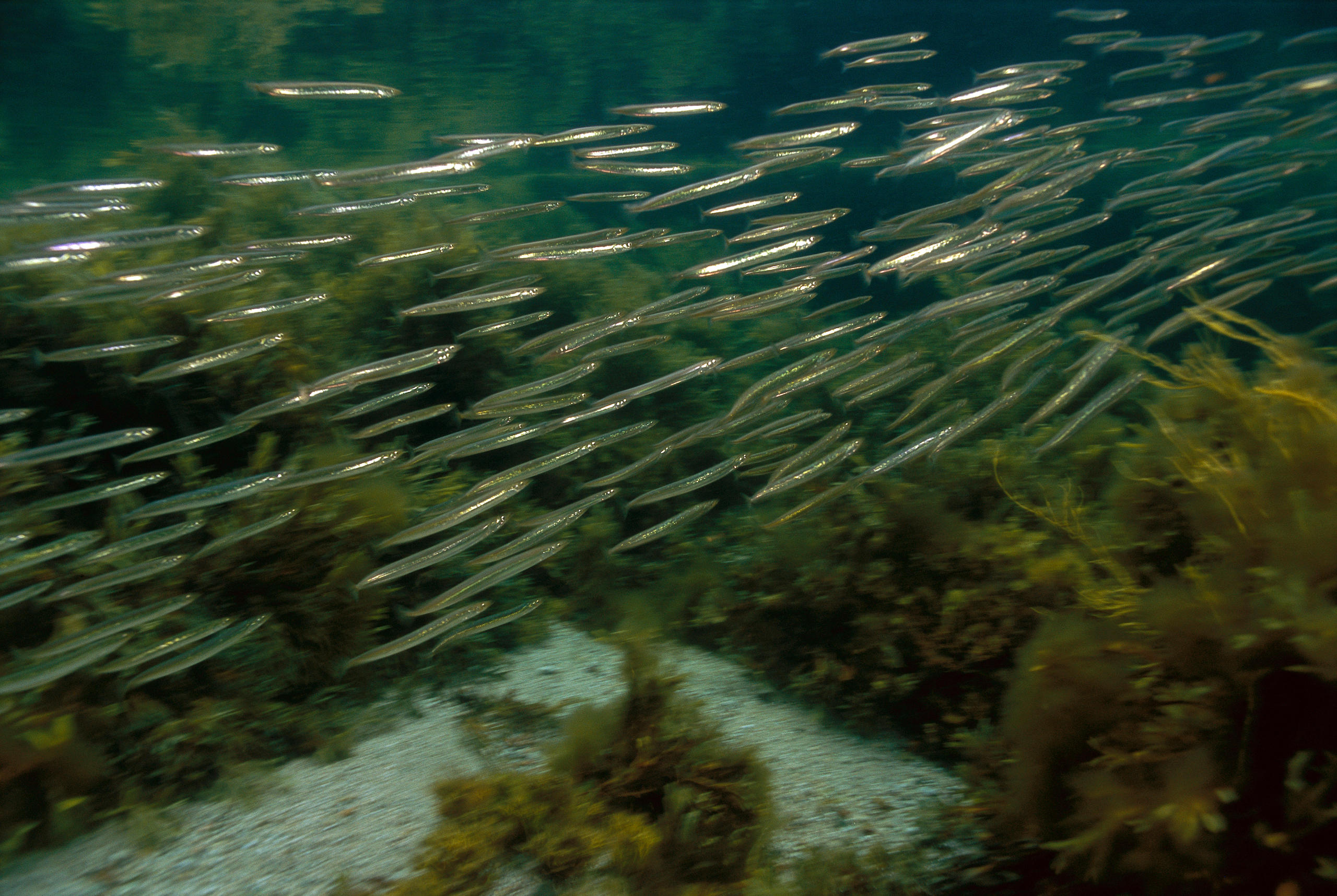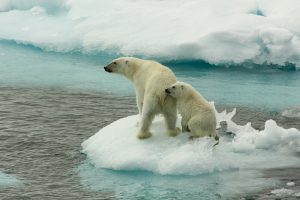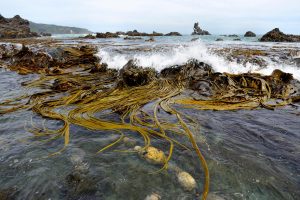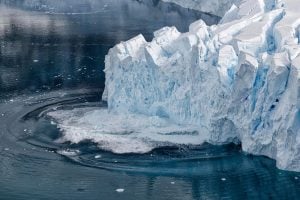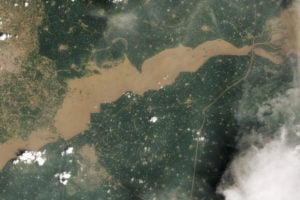The verdict is in: global sea temperatures shattered new heat records in 2023, with anomalous warmth erupting in the Northeast Atlantic Ocean in a year that also saw numerous record-setting extreme terrestrial heatwaves, droughts, floods and wildfires on five continents.
According to the US National Oceanic and Atmospheric Administration (NOAA), North Atlantic waters reached a high of 24.9C in July – where an annual peak isn’t usually reached until early September, worrying the scientific community about repercussions for aquatic life. July’s record high was more than 1C warmer than the 30-year climatological normal for the North Atlantic from 1982 to 2011.
Researchers say rapid warming in the region is endangering phytoplankton – the base of the marine food chain – thus reducing food availability for species that depend on these microscopic algae to survive. A hotter North Atlantic could also be accelerating the “Atlantification” of the Arctic Ocean, as more temperate fish species move into Arctic waters to beat the heat.
All this comes as a new El Niño takes hold globally in 2023. El Niños – caused by the development of a band of warmer surface water in the central and eastern Pacific Ocean – recur naturally every few years. They have major impacts on the world’s weather, including elevated atmospheric temperatures, which could in turn increase ocean warming, lengthening, and intensifying marine heatwaves.
NOAA says this El Niño has a greater than 95% likelihood of lasting through January to March 2024, with a more than 70% chance of being a strong event. The consequences? A potentially hotter northern summer in 2024, triggering more disruptive anomalous extreme weather events around the world.
Warming effects spreading through the food web
Earlier this year, European scientists suggested that future climate-change-driven warming could result in “widespread changes in opportunities for commercial fisheries” across the Northeast Atlantic shelf seas. Importantly, they found that within the area sampled, sea temperatures were the primary driver of fish community composition. And now with those temperatures soaring (2022 set the previous North Atlantic heat record), those fish communities are visibly altering.
The rising intensity and frequency of marine heatwaves in the North Atlantic is also expected to disrupt the balance of marine ecosystems into the future – starting at the base of the oceanic food web with phytoplankton.
In the Eastern North Atlantic, experts have flagged the recent marine heatwave as a probable cause of a decline in microscopic algae, which many aquatic species depend on: Phytoplankton are eaten by zooplankton, which are in turn eaten by small fish, which are eaten by bigger fish, which are eaten by seals, and so on.
The phytoplankton reduction is thought to be triggered by warming waters, which alter ocean stratification, reducing the availability of nutrients and sunlight that the microorganisms need in order to photosynthesise and grow.

The North Atlantic typically hits the peak of its spring phytoplankton bloom in June, which is when the largest increase in phytoplankton biomass is generally detected. But that’s also when the intense warming occurred this year.
And with phytoplankton populations now decreasing, scientists are detecting impacts up the food chain.
Also, a reduction in phytoplankton populations could reduce carbon sequestration. That’s because these microorganisms in high numbers remove significant amounts of carbon from surface waters when they die and sink, storing carbon in the deep ocean and making a major contribution to long-term carbon sequestration. Fewer phytoplankton means less sequestration, and less curbing of global warming.
The organic carbon synthesised by phytoplankton during that June period, when photosynthesis is at its highest level, has long been crucial to providing the energy needed to sustain the North Atlantic region’s marine food web, Arthi Ramachandran, a polar expert with science popularisation NGO Arctic Basecamp, wrote in an email.
Ramachandran cited similar observations during the anomalous 2015 Northeast Pacific marine heatwave, which caused comparable shifts in marine species distribution and abundance. “The increase of physical and chemical anomalies led to a cascade of effects that was seen throughout the food web,” she said.
One thing is clear: The progressive shift of Arctic marine ecosystems toward a more temperate state is happening now
Scientists continue to be concerned about the synergistic impacts of these compound events – as a combination of climate drivers widely impact other environmental factors, resulting, for example, in low-chlorophyll levels during high-temperature extremes.
“Right now, in the Eastern North Atlantic, a significant decrease in chlorophyll-a concentration – used as a proxy for phytoplankton abundance – has been observed,” Ramachandran noted. Scientists have shown that such a decline was closely related to the spatial distribution of marine heatwaves.
A drop in the quantity of phytoplankton, or a change in the phytoplankton species present in the North Atlantic, could result in less zooplankton there and a switch toward smaller phytoplankton species in the region, Maxime Geoffroy, a research scientist at Canada’s Marine Institute of the Memorial University of Newfoundland, explained in an email.
This, in turn, could reduce the abundance of forage fish that feed on zooplankton, he added. “For instance, capelin and sand lance are known to be increasingly present in the Canadian Arctic where they increase competition for Arctic endemic species.”
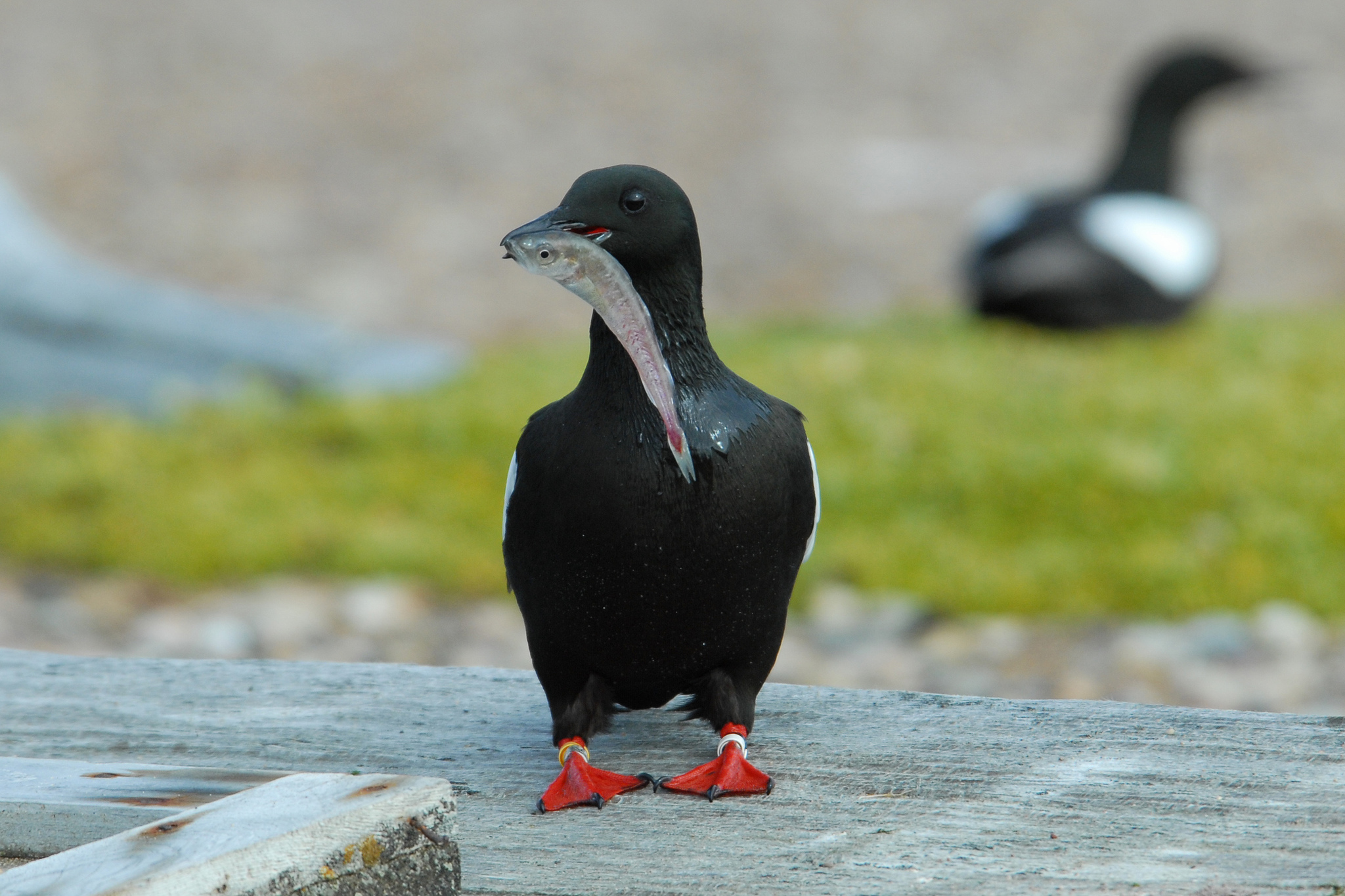
Fish heading north to escape the heat
What happens in the North Atlantic Ocean isn’t likely to stay in the North Atlantic Ocean.
Scientists continue to observe the ongoing Atlantification of the Arctic Ocean, as it moves toward a warmer ecosystem where polar fish species are forced to compete with intruding North Atlantic fish.
“They are now replacing native species there,” Ramachandran said, as global warming weakens the barrier between the layers of a relatively fresh Arctic Ocean, allowing warmer, saltier North Atlantic waters to blend and, as a consequence, diminish sea ice resilience in the polar region.
“The current heatwave can exacerbate this process, causing a larger influx of fish moving north to escape the heat,” she added.
In 2015, scientists estimated the Arctic region was set to see the largest marine species turnover worldwide due to climate change, “with a modelled invasion intensity of five times the global average,” as formerly temperate zone fish invade the far north.
“Lower abundance of forage fish results in lower abundance of larger piscivorous [fish-eating] fishes,” Geoffroy said. He has studied the case of Arctic cod (Boreogadus saida), the most abundant forage fish in Arctic seas, which in certain regions transfer more than 70% of the energy found in the zooplankton that it feeds on up the food chain to piscivorous fish, marine mammals and seabirds.
Arctic cod are adapted to sub-zero temperatures, but a warming North Atlantic and Arctic Sea is causing boreal competitors to extend their distribution northward, hiking risks of competition with and predation on endemic Arctic fish fauna.
According to Geoffroy’s study, “a borealisation of the marine ecosystem coupled with changes in the distribution and abundance of Arctic cod can have detrimental effects on the populations of top [Arctic] predators, such as seabirds and marine mammals.”
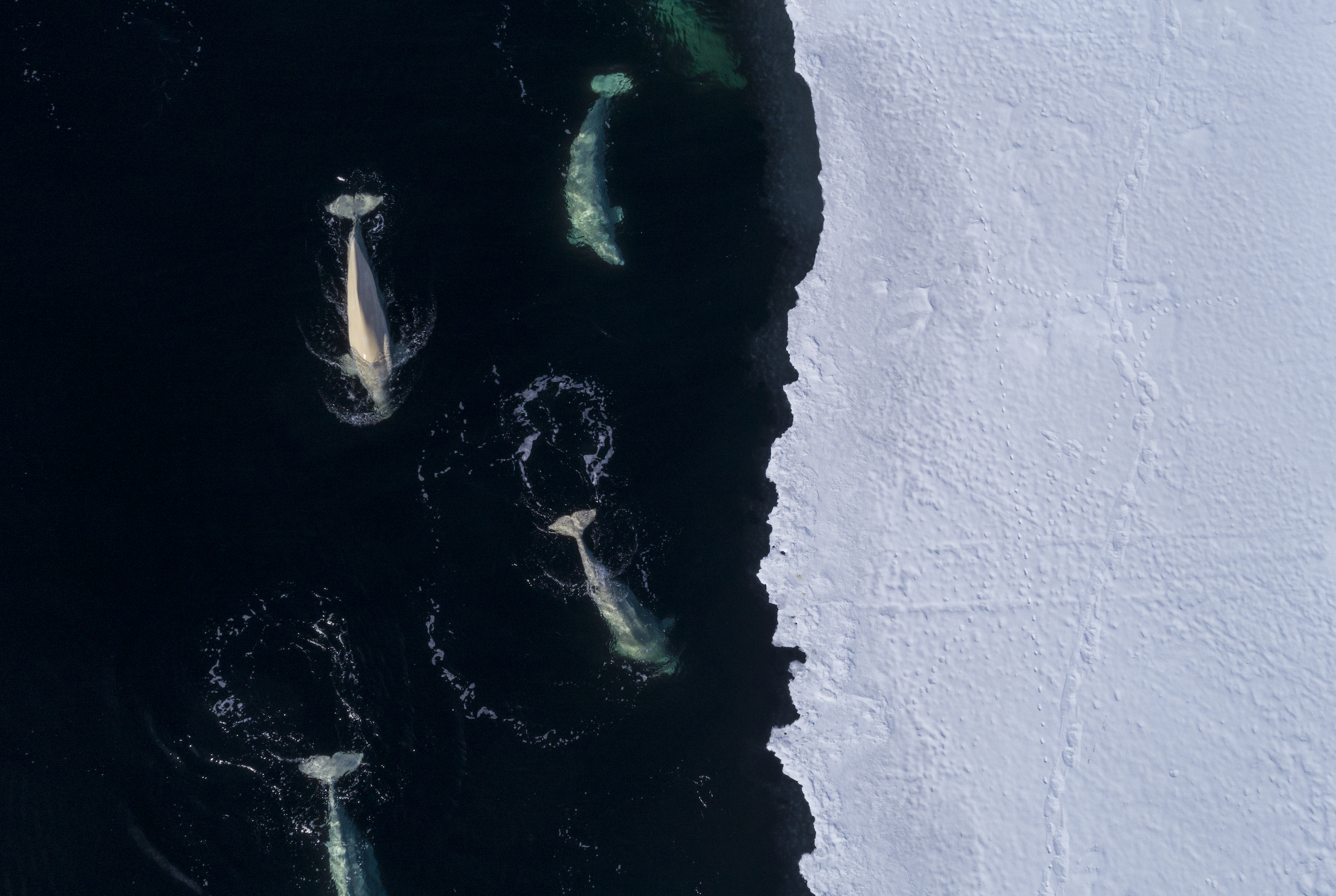
The study authors noted that the greatest climate-change pressures on Arctic cod are currently being seen in the Northeast Atlantic Arctic region and, to a lesser extent, in the Hudson complex, and Davis Strait-Baffin Bay, “where the ecological importance of Arctic cod diminishes and the co-distribution with boreal species, such as capelin and sand lance, increases.”
A similar observation of a drastic change in fish communities has been observed in the warming Mediterranean Sea, according to Mercator Ocean International (MOI) researchers. There, marine heatwaves can create a favourable environment for invasive tropical species which enter Mediterranean waters from the Red Sea via the Suez Canal. Some of those Red Sea species are very competitive for resources and space, and can outcompete Mediterranean species important for the local biodiversity and economy.
The risk of serious ecological change threatens not only the Arctic Ocean, but also the Northeast Atlantic continental shelf and its fisheries, which according to previous studies, recorded annual fish landings in excess of 5.8 million metric tons, valued at $8.5 billion. This makes it one of the most productive commercial marine fishery regions in the world, and demonstrating that global warming has the potential to impact not only sea life but also transnational economics.
For Geoffroy, however, it is too soon to predict the precise long-term impacts of the North Atlantic heatwave on marine organisms, or to be sure of its exact causes. One thing is clear: The progressive shift of Arctic marine ecosystems toward a more temperate state is happening now — with some serious consequences already coming into view.
More ocean heat anomalies to come
Earth’s oceans are getting progressively hotter. “The [global] mean sea surface temperature has increased since the preindustrial era — and continues to increase,” Ramachandran said. The reason: Oceans absorb roughly 90% of the excess heat generated by human-caused warming. As a result, “we know that marine heatwaves all over the world’s oceans are becoming warmer … and we can expect a [further] increase in marine heatwaves with time,” Ramachandran added.
In her view, the oceanic heat records observed in recent months were caused by a combination of short- and long-term contributing influences, including escalating climate change, alterations in atmospheric circulation (including those brought by this year’s El Niño), and even air pollution. (Some researchers suggest, for example, that newly implemented pollution controls on ships sailing the heavily trafficked North Atlantic sea lanes have reduced sulphate aerosol emissions there — cutting pollutants that hitherto had an atmospheric cooling effect, but that is now both clearing the air and stepping up warming in northern waters.)
“At the core, we could say that a driving factor is global warming,” Ramachandran explained. “The closer we get to reaching and surpassing climate tipping points, the more likely we will continue to observe increases in [warming] anomalies and unprecedented change.”
The average global atmospheric surface temperature for July 2023 was 0.72° Celsius (1.3° Fahrenheit) warmer than the 1991-2020 average, while that of sea surface temperature was 0.51°C (0.9°F) hotter during than the 1991-2020 average that same month, according to data by the Copernicus Climate Change Service (C3S).
The World Meteorological Organization (WHO) projects that global temperatures will continue surging over the next five years, “fuelled by heat-trapping greenhouse gases and the naturally occurring El Niño.”
This article is republished from Mongabay.
